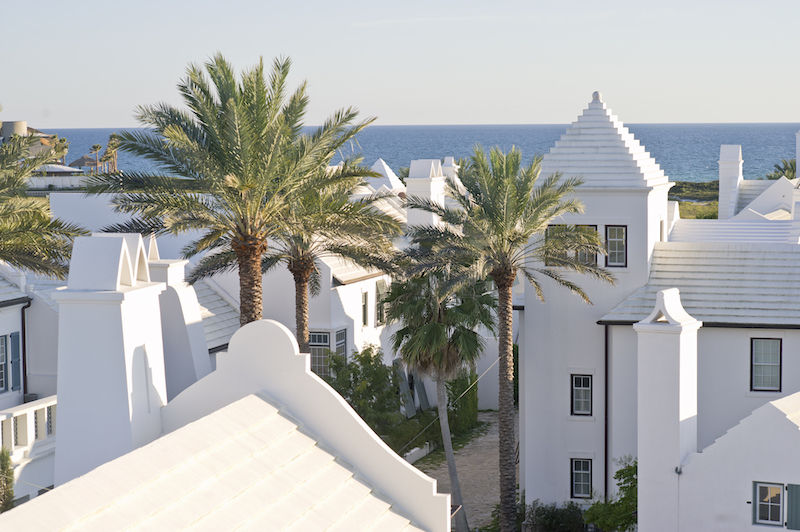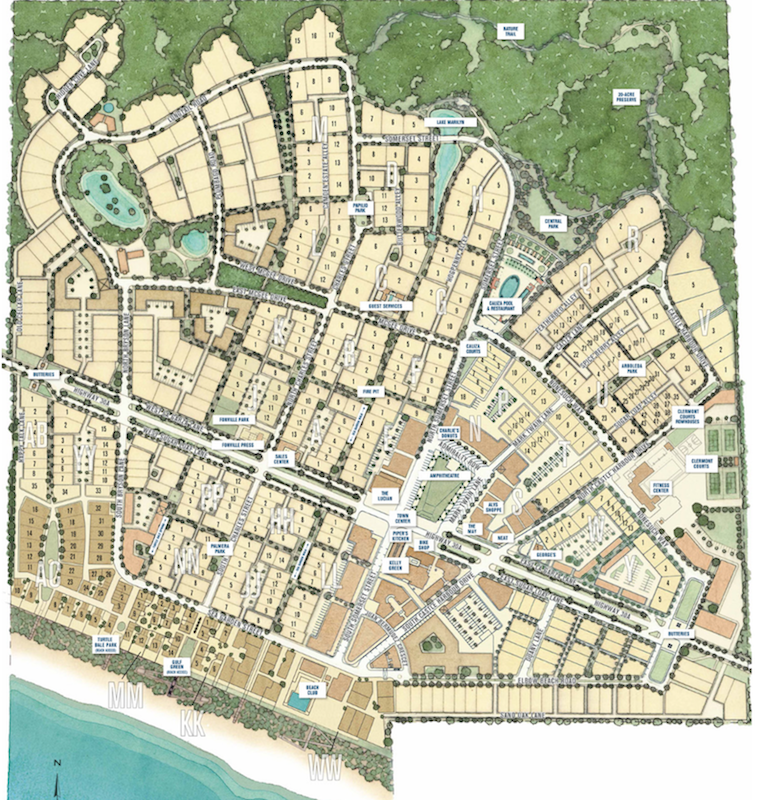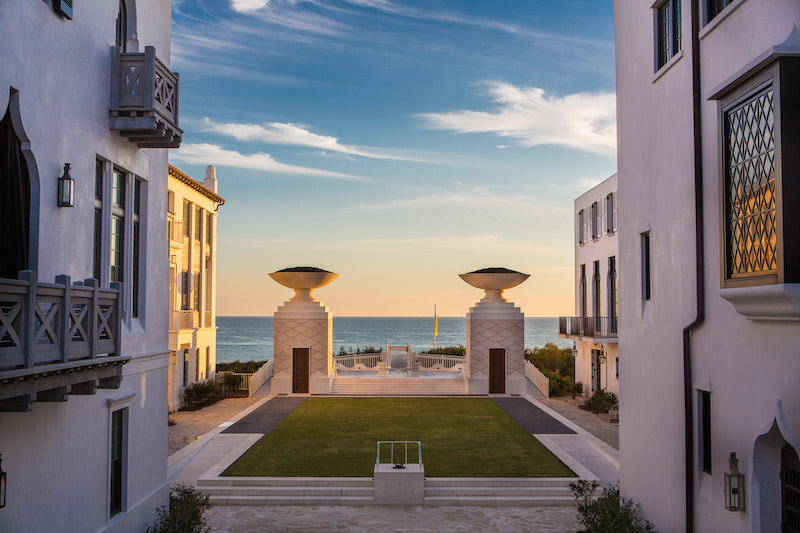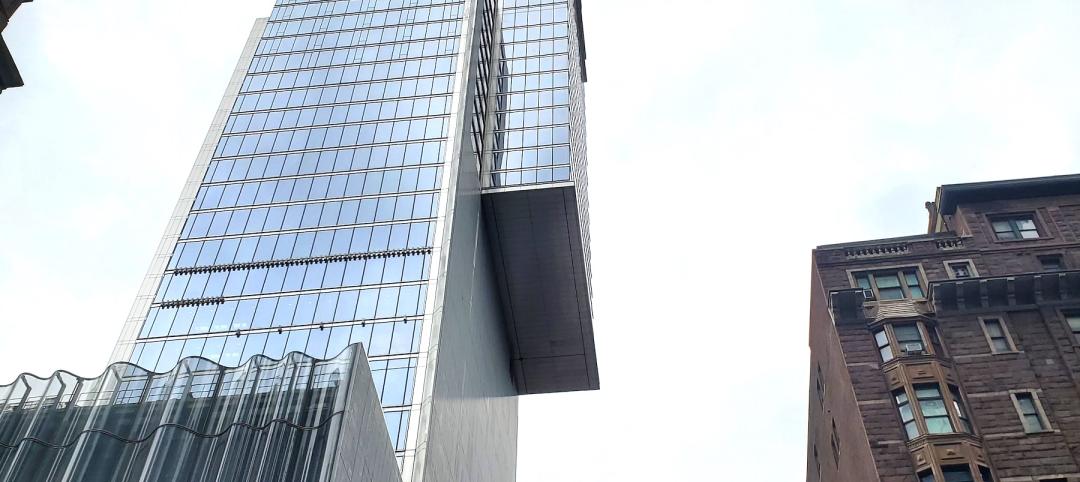Thirteen years ago, the Alabama-based developer EBSCO broke ground on Alys Beach, a 158-acre residential community that was the last piece of available beachfront property on Florida’s Panhandle along the Gulf of Mexico.
Delays related to the weather and economy slowed construction for several years, but this luxury community, where home price range from $2 million to more than $6 million, now appears to be in fuller swing.
Entitled for 899 housing units, Alys Beach to date has sold 215 properties (homes and/or lots), has completed 115 homes, has 60 under construction, and 50 more under development.
The community was the first to be certified by the Florida Green Building Council. It was also the first community in the world to require that its structures be built to the resilient engineering and construction standards established by the Insurance Institute for Business & Home Safety’s FORTIFIED HOME program.
Those standards are based on 20 years of storm-damage research that IBHS has accumulated and analyzed. Depending on the level at which the structures are built (gold, silver, or bronze), these homes can withstand winds and rain up to 150 miles per hour. After a third-party evaluator assesses the home’s construction or renovation, the owner receives a designation certificate from IBHS that’s good for five years.
Alys Beach—which is named after Alys Robinson Stephens, the wife of EBSCO’s cofounder Elton Bryson Stephens, Sr., who bought this land in 1978—is noteworthy in that it has its own in-house construction company, Alys Beach Construction, which continues to be the GC on this project.
 All-masonry construction is both a resilient and aesthetic choice by Alys Beach's developer. Image: Alys Beach
All-masonry construction is both a resilient and aesthetic choice by Alys Beach's developer. Image: Alys Beach
Because the community’s home construction is all masonry anyway, building to FORTIFIED HOME’s standards—which in other markets have increased the final price of a house by as much as one-fifth—has added only around 5% to the cost of an Alys Beach house, says Marieanne Khoury-Vogt, a Principal, with husband Eric Vogt, in Khoury & Vogt Architects in Panama City, Fla., Alys Beach’s architect and designer. She’s also the town architect.
Many of the homes in Alys Beach are vacation houses for their owners, and higher construction standards weren’t hard to sell them on, Khoury-Vogt says. “It gives them peace of mind against the threat of hurricanes.”
Miami-based Duany Plater-Zyberk Partners planned Alys Beach as a Traditional Neighborhood Development that emphasizes walkability. Buildings are grouped into small compounds and unified by perimeter walls, which are higher and more formal in urban zones, lower and more rustic in rural areas.
Construction is denser near the beach and highway, and sparser near to the 20 acres of protected wetlands to the north of the community. All streets lead to the beach, with views of the water kept clear for as great a distance as possible. The main street also leads to a waterfront plaza.
The buildings’ Bermuda architectural style is combined with a patio house type that originated in Antigua, and a courtyard building type that emanated from California.

An aerial rendering of the layout of Alys Beach, whose 158 acres straddle the Gulf of Mexico to the south and protected wetlands to the north. Image: Alys Beach
Cobblestone streets allow rainwater to filter naturally into soil, which in turn reduces runoff. Khoury-Vogt notes that the community’s underground utilities are accessible for maintenance and repair via street-level removable paver stones that are strategically located through the neighborhood.
While some owners have installed geothermal systems, renewable power so far has been an outlier at Alys Beach. Khoury-Vogt says that, to her knowledge, only one owner has chosen to install solar panels.
(Compare that to another Florida community, the 18,000-acre Babcock Ranch in Palm Beach Gardens, which broke ground last year on its first phase of 1,000 homes. This community’s developer Kitsen & Partners donated land to Florida Power & Light to build a 440-acre solar farm there to power what is projected to be nearly 20,000 homes over the next two decades.)
Khoury-Vogt says that Alys Beach’s buildout should be completed by 2036.
Related Stories
Sponsored | Resiliency | Dec 14, 2022
Flood protection: What building owners need to know to protect their properties
This course from Walter P Moore examines numerous flood protection approaches and building owner needs before delving into the flood protection process. Determining the flood resilience of a property can provide a good understanding of risk associated costs.
Green | Dec 9, 2022
Reaching carbon neutrality in building portfolios ranks high for organizations
Reaching carbon neutrality with their building portfolios ranks high in importance among sustainability goals for organizations responding to a Honeywell/Reuters survey of senior executives at 187 large, multinational corporations. Nearly nine in 10 respondents (87%) say that achieving carbon neutrality in their building portfolio is either extremely (58%) or somewhat (29%) important in relation to their overall ESG goals. Only 4% of respondents called it unimportant.
Green | Dec 9, 2022
Newly formed Net Zero Built Environment Council aims to decarbonize the built world
Global management consulting firm McKinsey recently launched the Net Zero Built Environment Council, a cross-sector coalition of industry stakeholders aiming to decarbonize the built world. The council’s chief goal is to collaboratively create new pathways to cut greenhouse gas emissions from buildings.
Adaptive Reuse | Dec 9, 2022
What's old is new: Why you should consider adaptive reuse
While new construction allows for incredible levels of customization, there’s no denying that new buildings can have adverse impacts on the climate, budgets, schedules and even the cultural and historic fabrics of communities.
75 Top Building Products | Nov 30, 2022
75 top building products for 2022
Each year, the Building Design+Construction editorial team evaluates the vast universe of new and updated products, materials, and systems for the U.S. building design and construction market. The best-of-the-best products make up our annual 75 Top Products report.
Seismic Design | Nov 16, 2022
SPC-4D: 7 reasons California hospital building owners should act now to meet seismic compliance
Seismic compliance with the applicable California building codes is onerous and disruptive for building owners, especially for a building in the heavily regulated sector of healthcare. Owners of older buildings that house acute care services have a big deadline on the horizon—Jan. 1, 2030, the cutoff date to upgrade their buildings to SPC-4D.
Energy-Efficient Design | Nov 14, 2022
How to achieve net zero energy in five steps
Martine Dion and Ethan Seaman share net zero energy best practices with owners and developers.
Resiliency | Nov 8, 2022
Oregon wildfire risk law prompts extensive backlash from property owners
A bipartisan bill aimed at protecting property owners from wildfires that was passed by the Oregon legislature has prompted a strong backlash.
Sponsored | Steel Buildings | Nov 7, 2022
Steel structures offer faster path to climate benefits
Faster delivery of buildings isn’t always associated with sustainability benefits or long-term value, but things are changing. An instructive case is in the development of steel structures that not only allow speedier erection times, but also can reduce embodied carbon and create durable, highly resilient building approaches.
Fire and Life Safety | Oct 4, 2022
Fire safety considerations for cantilevered buildings
Bold cantilevered designs are prevalent today, as developers and architects strive to maximize space, views, and natural light in buildings. Cantilevered structures, however, present a host of challenges for building teams, according to José R. Rivera, PE, Associate Principal and Director of Plumbing and Fire Protection with Lilker.
















